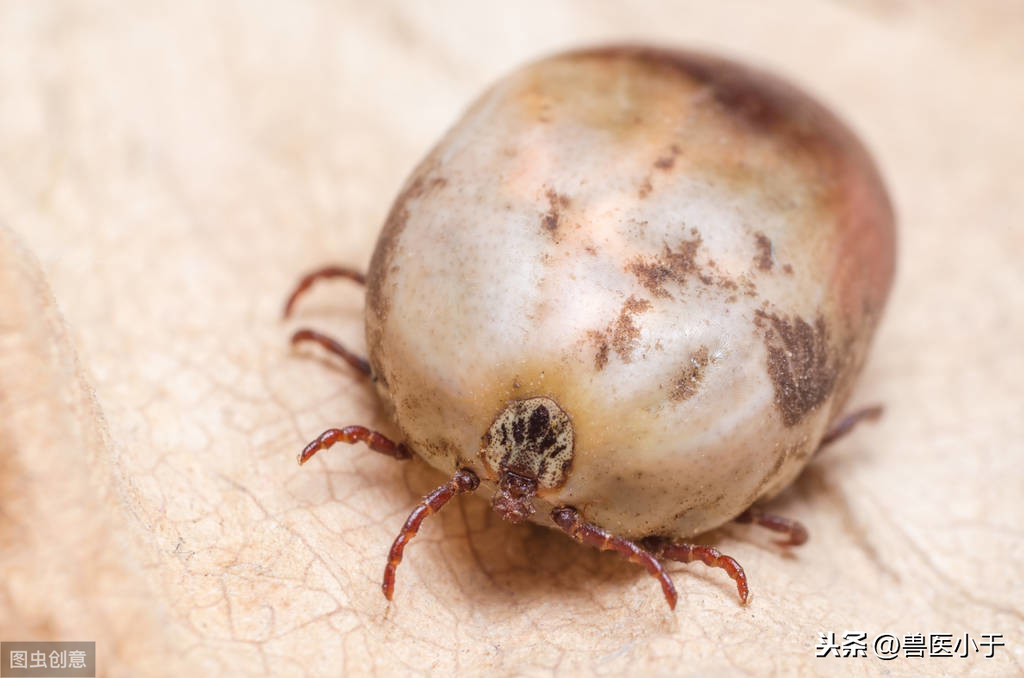
Recently, many farmers' cattle and sheep have developed symptoms of persistent fever, anemia, lack of energy and non-eating. Many of the reasons are related to scorched worm disease, which is summarized as follows:
1
Introduction of scorched worms
Once known as "scorched worm disease", pear-shaped worm disease is a blood protozoa caused by a variety of pear-shaped worms parasitized in red blood cells by Babesco and Taylor family.
Babesiosis is transmitted through a tick vector. When the tick sucks blood on the body of the diseased cattle and sheep, the red blood cells containing the worm body are inhaled into the body, and the worm body develops and multiplies in the tick body for a period of time, and then passes through the tick egg or during the menstrual period (metamorphosis process), which extends the worm body to the next generation or the next stage of development of the tick, and then bites the susceptible animal, causing infection.
2
Popular features
Babesiosis is distributed worldwide, bovine double bud babesiosis is widely distributed in China, has been reported in 14 provinces and regions, mainly in the southern provinces and Sichuan, Qinghai, Tibet and other places; bovine Babesia infection is found in Guizhou, Anhui, Hubei, Hunan, Henan and Shaanxi provinces; ovoid babesia has been found in Henan and other places.
3
Clinical symptoms
In clinical consultation, the two types of pear-shaped worm disease have the same manifestations: body temperature rises to more than 40 ° C, showing residual fever; lack of energy, lying on the ground, loss of appetite or abandonment; rumination weakness or cessation; pale anemia of the conjunctiva, jaundice; constipation or diarrhea, feces are dark brown and have a malignant odor; shortness of breath, rapid emaciation of sick animals, slow or wavering. But they each have different characteristics: babesiosis has hematuria, and the urine changes from reddish red to brownish red or black-red. Taylor's disease is hematuria, the urine is pale yellow or dark yellow, the lymph nodes on the surface of the body are enlarged, especially the anterior shoulder lymph nodes are prominent, there are bleeding spots under the eyelids, and in severe cases, there are bleeding plaques on the skin.
4
prophylaxis
The key is to eliminate ticks in the animal body and its surroundings. The following method is usually used: kill the ticks on the body of cattle and sheep. During the tick season, ticks that parasitize the drooping flesh, the inner legs, the breasts, and other parts of the animal's body can be removed by hand. Or the drug tick control effect is also very good, can be diluted with dichloride (2.5% cypermethrin emulsion) diluted 250 times sprayed livestock, sprayed once every 15 days, 10 times in a row, can prevent the occurrence of pear-shaped insect disease within 1 year; eliminate ticks in the pen.
5
treat
Diagnose and treat as early as possible. While applying special drugs to kill insects, it should be treated with cardiotonic, hydration, stomach, diarrhea, liver thinning and choleretic and antibiotic drugs according to the physical condition of sick animals, and strengthen nursing. Commonly used specific drugs are the following: triazamidine (Bernier or bloodworm net), when used, the powder is mixed with distilled water into a 5% to 7% solution for deep intramuscular equinox injection, the dose of cattle is 3 to 7 mg per kilogram of body weight; the dose of buffalo is 7 mg per kilogram of body weight; the dose of dairy cows is 2 to 5 mg per kilogram of body weight, and the dose of sheep is 3 to 5 mg per kilogram of body weight. Except for buffalo, which can only be used once, other livestock can be used 3 times in a row according to the situation, each time at an interval of 24 hours.